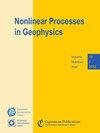厄尔尼诺-南方涛动事件最佳前兆的取样方法
IF 1.7
4区 地球科学
Q3 GEOSCIENCES, MULTIDISCIPLINARY
引用次数: 0
摘要
摘要厄尔尼诺-南方涛动(ENSO)是热带太平洋地区周期性出现的一种重要气候现象。中级海洋-大气耦合 Zebiak-Cane (ZC) 模型是首个用于厄尔尼诺-南方涛动事件数值预报的经典模型。传统上,条件非线性最优扰动(CNOP)方法被用于捕捉实际中的最优前兆。本文基于最先进的统计机器学习技术1,研究了 Shi 和 Sun(2023 年)提出的采样算法,在 ZC 模型中通过 CNOP 方法获得最佳前兆。对于 ZC 模型,或者更广义地说,具有大量 O(104-105) 自由度的数值模型,不管是静态空间模式还是动态非线性时间演化行为,以及相应的量和指数,其数值表现都显示出采样方法与传统的邻接法相比具有很高的效率。采样算法不仅将梯度(一阶信息)还原为目标函数值(零阶信息),而且避免了在海洋-大气耦合模型和参数化模型中难以建立的辅助模型的使用。此外,基于样本独立且同分布的关键特性,我们可以通过并行计算来实现采样算法,从而缩短计算时间。同时,我们还通过数值实验证明,即使样本数量急剧减少,仍能捕捉到最优前兆的重要特征。本文章由计算机程序翻译,如有差异,请以英文原文为准。
The sampling method for optimal precursors of El Niño–Southern Oscillation events
Abstract. The El Niño–Southern Oscillation (ENSO) is a significant climate phenomenon that appears periodically in the tropical Pacific. The intermediate coupled ocean–atmosphere Zebiak–Cane (ZC) model is the first and classical one designed to numerically forecast the ENSO events. Traditionally, the conditional nonlinear optimal perturbation (CNOP) approach has been used to capture optimal precursors in practice. In this paper, based on state-of-the-art statistical machine learning techniques1, we investigate the sampling algorithm proposed in Shi and Sun (2023) to obtain optimal precursors via the CNOP approach in the ZC model. For the ZC model, or more generally, the numerical models with a large number O(104−105) of degrees of freedom, the numerical performance, regardless of the statically spatial patterns and the dynamical nonlinear time evolution behaviors as well as the corresponding quantities and indices, shows the high efficiency of the sampling method compared to the traditional adjoint method. The sampling algorithm does not only reduce the gradient (first-order information) to the objective function value (zeroth-order information) but also avoids the use of the adjoint model, which is hard to develop in the coupled ocean–atmosphere models and the parameterization models. In addition, based on the key characteristic that the samples are independently and identically distributed, we can implement the sampling algorithm by parallel computation to shorten the computation time. Meanwhile, we also show in the numerical experiments that the important features of optimal precursors can still be captured even when the number of samples is reduced sharply.
求助全文
通过发布文献求助,成功后即可免费获取论文全文。
去求助
来源期刊

Nonlinear Processes in Geophysics
地学-地球化学与地球物理
CiteScore
4.00
自引率
0.00%
发文量
21
审稿时长
6-12 weeks
期刊介绍:
Nonlinear Processes in Geophysics (NPG) is an international, inter-/trans-disciplinary, non-profit journal devoted to breaking the deadlocks often faced by standard approaches in Earth and space sciences. It therefore solicits disruptive and innovative concepts and methodologies, as well as original applications of these to address the ubiquitous complexity in geoscience systems, and in interacting social and biological systems. Such systems are nonlinear, with responses strongly non-proportional to perturbations, and show an associated extreme variability across scales.
 求助内容:
求助内容: 应助结果提醒方式:
应助结果提醒方式:


